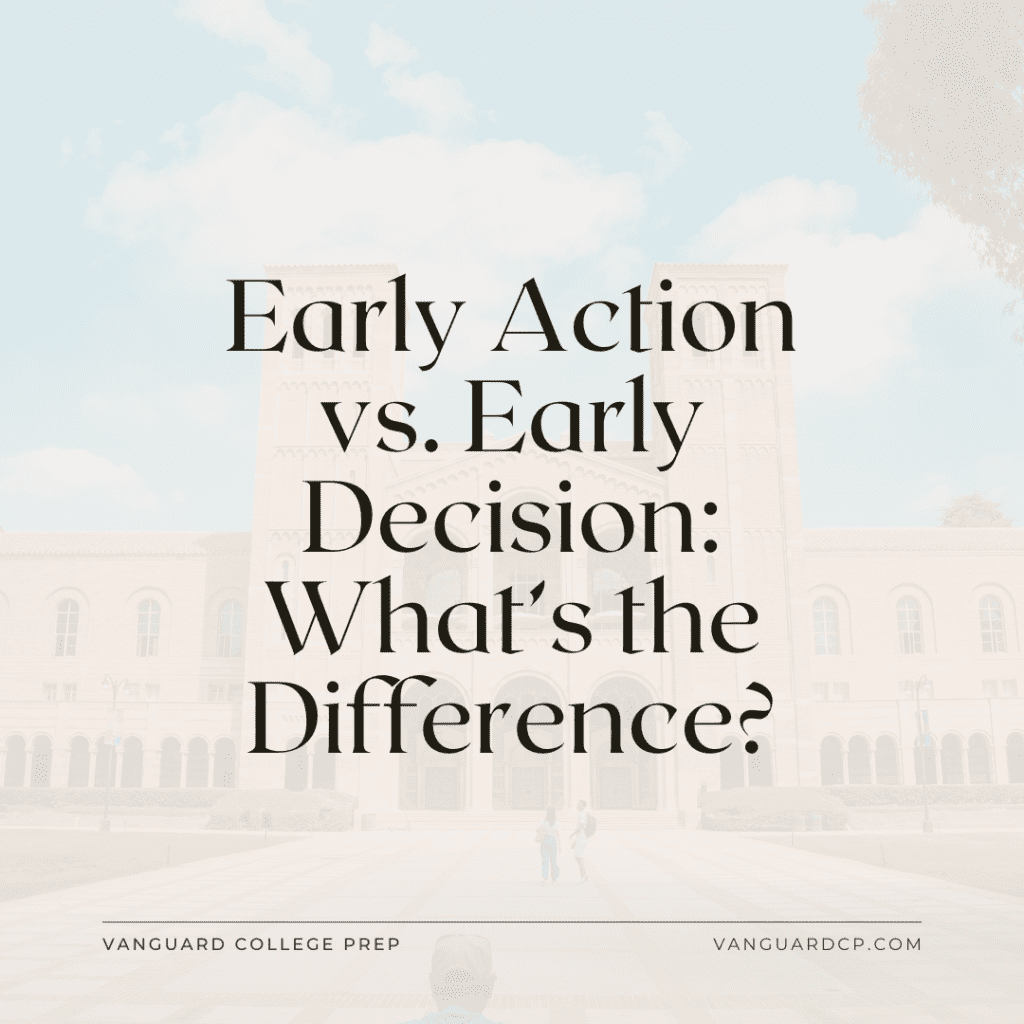- Leave a Comment
- July 20 2022
- College Applications
- By vanguard
Early Action vs. Early Decision: What’s the Difference?
Early Action vs. Early Decision: What’s the Difference?
Applying to college can be extremely stressful, with exponentially lower admissions rates adding to the uncertainty. Applying early can end that period of uncertainty a little sooner, and depending on the school, can also boost the student’s chances of getting in.
But in order to take advantage of this opportunity, you’ll need to understand the different options, as well as their respective pros and cons. Here’s everything you need to know about Early Decision, Early Action, and Restrictive Early Action.
What is Early Decision?
When you apply Early Decision to a school, you’re essentially promising to attend that school if you get in. In practice, this means that when you apply, you sign a legally binding contract stating that you will attend the school if you’re accepted.
Any student can claim that they’re dying to attend a school in their supplemental essays, but applying Early Decision is a concrete, undeniable demonstration of commitment. As a result, admissions rates are often significantly higher for Early Decision applicants than Regular Decision applicants. For example, the Early Decision acceptance rate for NYU is 24%, while the Regular Decision rate is just 12%.
However, that doesn’t mean that Early Decision is right for everyone. Since it’s legally binding, you should only choose this option if you are 100% certain you want to attend that school and can afford it, regardless of any scholarship money offered. Many students opt not to apply Early Decision because they want to compare the scholarships and financial aid packages offered by each school.
Early Action
Similar to Early Decision, when you apply Early Action, you’ll receive an admissions decision at an earlier date. But unlike Early Decision, Early Action is non-binding, so even if you are accepted to the school, you are under no obligation to attend.
Early Action is often the right choice for students who want to compare financial aid and scholarship options, or if they just aren’t 100% sure which school they want to attend. However, since this option is non-binding, the acceptance rate bump is modest. For example, MIT Early Action acceptance rate is 4.8%, while the Regular Decision rate is 4%.
Restrictive Early Action
Restrictive Early Action, or single-choice early action, is similar to Early Decision in that the student cannot apply to any other college early. So if you apply to Stanford Early Action, you cannot apply to any other school before the regular deadline (with the exception of public schools).
However, like other Early Action plans, an acceptance is non-binding. So you can demonstrate commitment, but still potentially weigh your options after other colleges release their decisions.
It’s difficult to say how much Restrictive Early Action boosts acceptance rates, because it’s relatively new and few colleges use it. But judging from Stanford’s numbers (4.73% for REA vs. 4% for RD), the boost is more similar to Early Action than Early Decision.
The Bottom Line
Early Decision can be a great choice for students who have a “dream school” that offers the option, as the acceptance rate will often be significantly higher. However, if that is not an option for personal or financial reasons, we recommend that all students apply for the earliest non-binding deadline to demonstrate interest, and to cut down on the stress of senior year!
If you'd like to learn more about Vanguard and our services, click here.
-Janey T. Division Supervisor
Columbia University (MFA), Brown University (BA)



Leave Your Comment